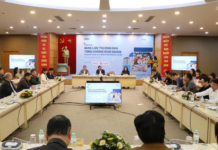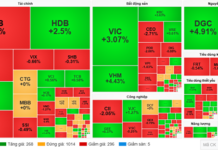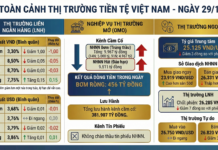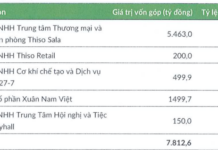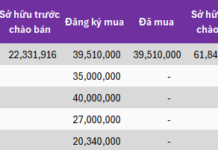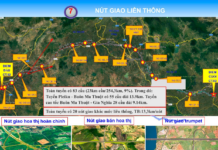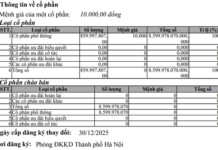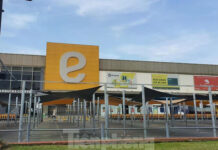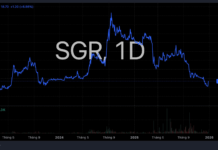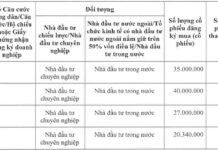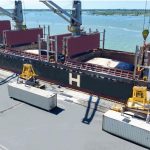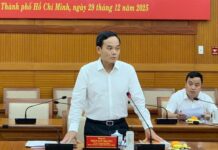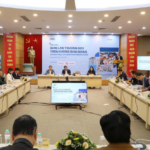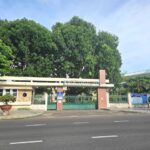On the morning of August 28, Deputy Prime Minister Tran Hong Ha chaired a meeting with several ministries, sectors, and localities regarding the draft detailed plan for seaports, wharves, piers, buoys, and water areas for the period of 2021-2030, with a vision towards 2050 (Detailed Port Plan). The meeting also discussed the investment policy for the Saigon International Transit Port project.
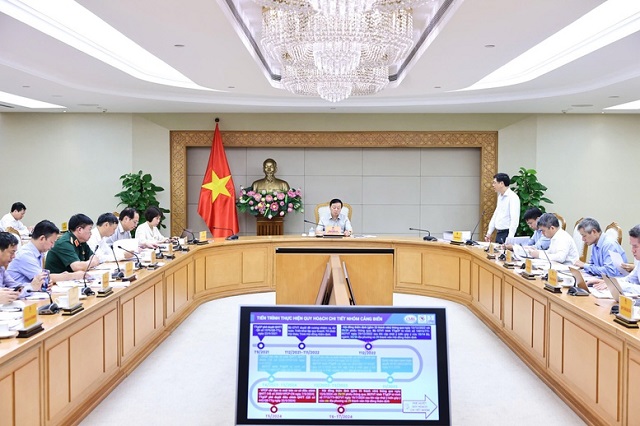
Leaders of ministries and sectors reporting at the meeting – Photo: VGP/Nguyen Hoang
|
Do not hinder creativity and effectiveness
Deputy Minister of Transport Nguyen Xuan Sang stated that the Detailed Port Plan aims to concretize the master plan for the seaport system, serving as a basis for policy formulation and the development of seaports to meet the socio-economic development needs and ensure national defense and security for localities, regions, and the whole country.
The plan is formulated in detail for each seaport and wharf area, determining the number of wharves and piers, and the type of port by 2030. It also includes some large-scale wharf and berth areas for the period of 2030-2050, which will be open for investment (Nam Do Son, Con Ong-Hon Net, Lien Chieu, Can Gio, Cai Mep Ha, Cai Mep Ha downstream, and Tran De).
Additionally, the plan proposes content related to the development of public maritime infrastructure, orientation for transport infrastructure connectivity, and direction for the development of piers and wharves to serve as a basis for subsequent plans or for reporting to competent authorities for consideration and approval during the approval of investment policies.
The plan also identifies land and water area requirements, investment capital needs, a list of priority tasks for investment by 2030, and implementation solutions.
It sets targets for cargo and passenger volume, as well as infrastructure development for each group of seaports, seaports, and wharf areas (determining the number of wharves and piers) based on forecasts. Specifically, by 2030, the total cargo and passenger volume handled by the seaport system is expected to reach 1,249-1,493 million tons (including 46.3-54.3 million TEU of container cargo) and 17,382-18,845 million passengers, respectively.
Both the General Director of Vietnam Maritime Corporation, Nguyen Canh Tinh, and the Chairman of the Board of Directors of Saigon Port Company, Huynh Van Cuong, agreed that the formulation and implementation of the plan would positively contribute to promoting services related to container port operations, cargo handling, customs clearance, freight forwarding, and pier and buoy services. They emphasized the importance of clearly defining objectives and specific content regarding cargo volume and infrastructure development for each group of seaports, seaports, and wharf areas.
Concluding on this matter, Deputy Prime Minister Tran Hong Ha emphasized that the plan must be coherent and based on scientific criteria, allowing for flexibility and updates to keep up with technological advancements, management practices, and changes in the region and internationally. He also suggested proposing mechanisms and policies to develop safe and efficient port infrastructure, attracting investment from leading global shipping lines, with overall management and coordination by the state, while harnessing the capabilities and creativity of investors.
The Deputy Prime Minister requested the Ministry of Transport and the consulting agency responsible for the plan to ensure compliance with legal regulations on planning, maritime affairs, and transportation. He also emphasized the importance of accuracy and scientific basis for data and forecasts, as well as consistency with sectoral, regional, and local plans.
Additionally, the Deputy Prime Minister suggested that the Ministry of Transport regularly monitor and report any unexpected changes beyond the forecasts to ensure that the “plan does not hinder creativity and effectiveness.”
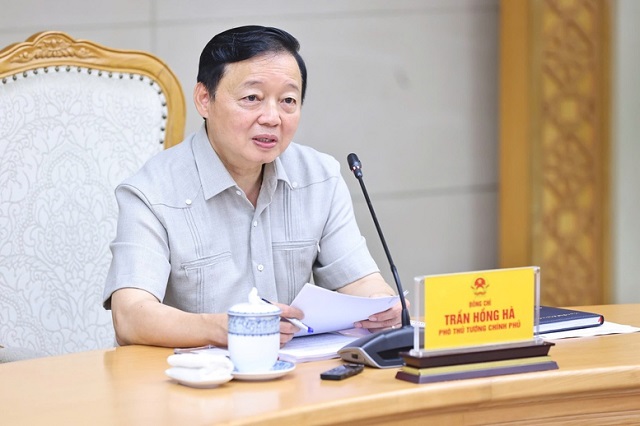
Deputy Prime Minister Tran Hong Ha: The design of the Saigon International Transit Port must be comprehensive, detailed, and synchronized for the seven investment phases – Photo: VGP/Nguyen Hoang
|
Thoroughly study and comprehensively evaluate the Saigon International Transit Port project
At the meeting, the Ministry of Planning and Investment reported on the Saigon International Transit Port project in Can Gio district, Ho Chi Minh City. The port is expected to provide services related to container port operations and have a scale of 571 hectares, with a total investment of about VND 113,500 billion. The project is planned to be implemented in seven phases over 22 years.
During the meeting, the leaders of ministries, sectors, and Ho Chi Minh City discussed and analyzed the project’s progress, total investment, technical infrastructure, and traffic connectivity.
Mr. Nguyen Canh Tinh suggested that Ho Chi Minh City direct solutions to ensure land allocation for the project in a timely manner during each phase. He also recommended that the city establish and publicly announce clear criteria and conditions for attracting investment, as well as the commitments required from investors.
Deputy Minister of Natural Resources and Environment Le Cong Thanh and the representative of the Ministry of Foreign Affairs expressed their opinion that the project is located in the buffer zone of the Can Gio Mangrove Biosphere Reserve, a UNESCO-recognized regenerated mangrove forest. Therefore, they emphasized the need for thorough assessments of the project’s environmental impact, nature conservation, and marine environment and resources.
They also suggested more detailed evaluations of the project’s compatibility with the overall planning and land use in the surrounding areas, as well as its compliance with the city’s master plan.
The People’s Committee of Ho Chi Minh City affirmed and committed that the detailed environmental impact assessment of the port project would be carefully studied and evaluated during the project’s feasibility study report preparation, in accordance with environmental laws, ensuring no negative impact on the Can Gio Mangrove Biosphere Reserve.
Requirements for investors regarding the use of modern and environmentally friendly exploitation technology will be studied and formulated to select the investor for the port construction project, ensuring that the exploitation process does not affect the ecological environment, especially the Can Gio Mangrove Biosphere Reserve.
Vice Chairman of the Ho Chi Minh City People’s Committee, Bui Xuan Cuong, reported and exchanged views on specific issues related to planning, forest variation during project implementation, and traffic connectivity. He also discussed the mobilization and allocation of capital for the project’s components.
Emphasizing the relatively long implementation period of the project, Deputy Minister of Science and Technology Hoang Minh requested that the project report clarify the trends in technological development and the technology transfer aspects for the project’s components. He cautioned against the risk of technology becoming outdated due to a lack of accurate forecasts and inadequate consideration during the long implementation period.
Concluding the meeting, the Deputy Prime Minister assigned the Ministry of Planning and Investment to coordinate with the Ministries of Agriculture and Rural Development, Natural Resources and Environment, Transport, and the People’s Committee of Ho Chi Minh City, along with relevant ministries and sectors, to review the project’s consistency and synchronization with related plans. He also instructed them to promptly complete the necessary documents for the appraisal and approval of the investment proposal.
The Deputy Prime Minister emphasized the need to clarify specific objectives for each phase and the “project life cycle” in accordance with legal regulations. He also requested the addition of requirements and orientations for the transfer of modern technology.
“The design of the Saigon International Transit Port must be comprehensive, detailed, and synchronized for the seven investment phases, clearly defining the locations of functional areas, addressing relationships with other port clusters, shared infrastructure, connectivity, and human resource training,” the Deputy Prime Minister noted. He also emphasized the importance of “not compromising the environment” and ensuring overall benefits and harmony while avoiding conflicts with other projects.

